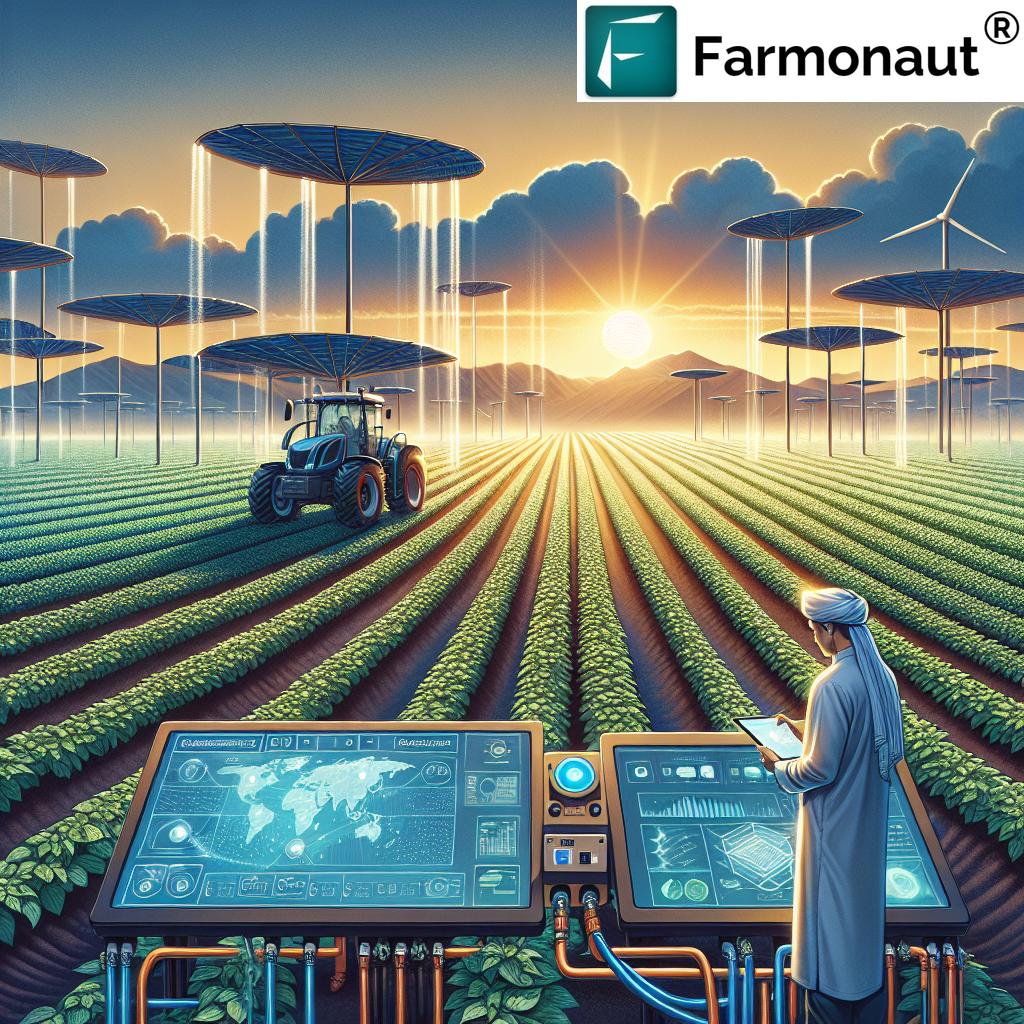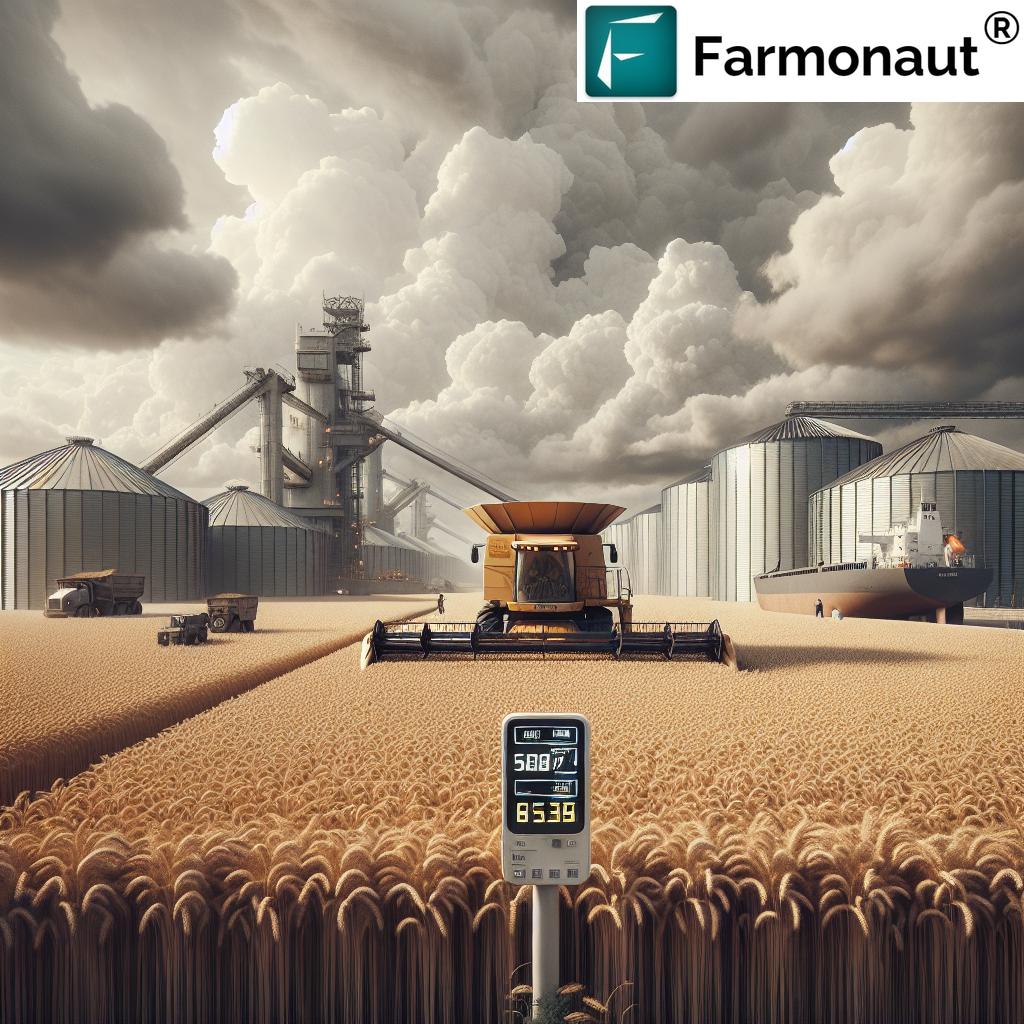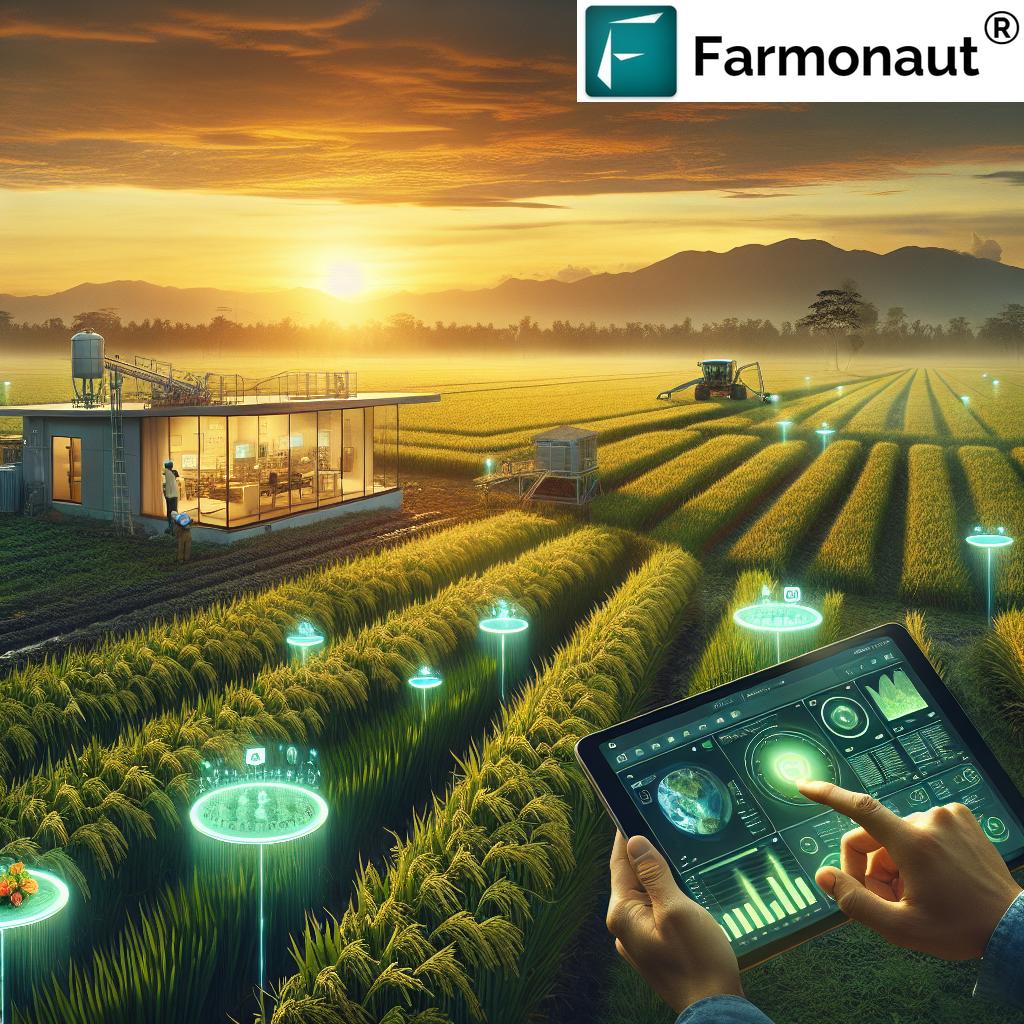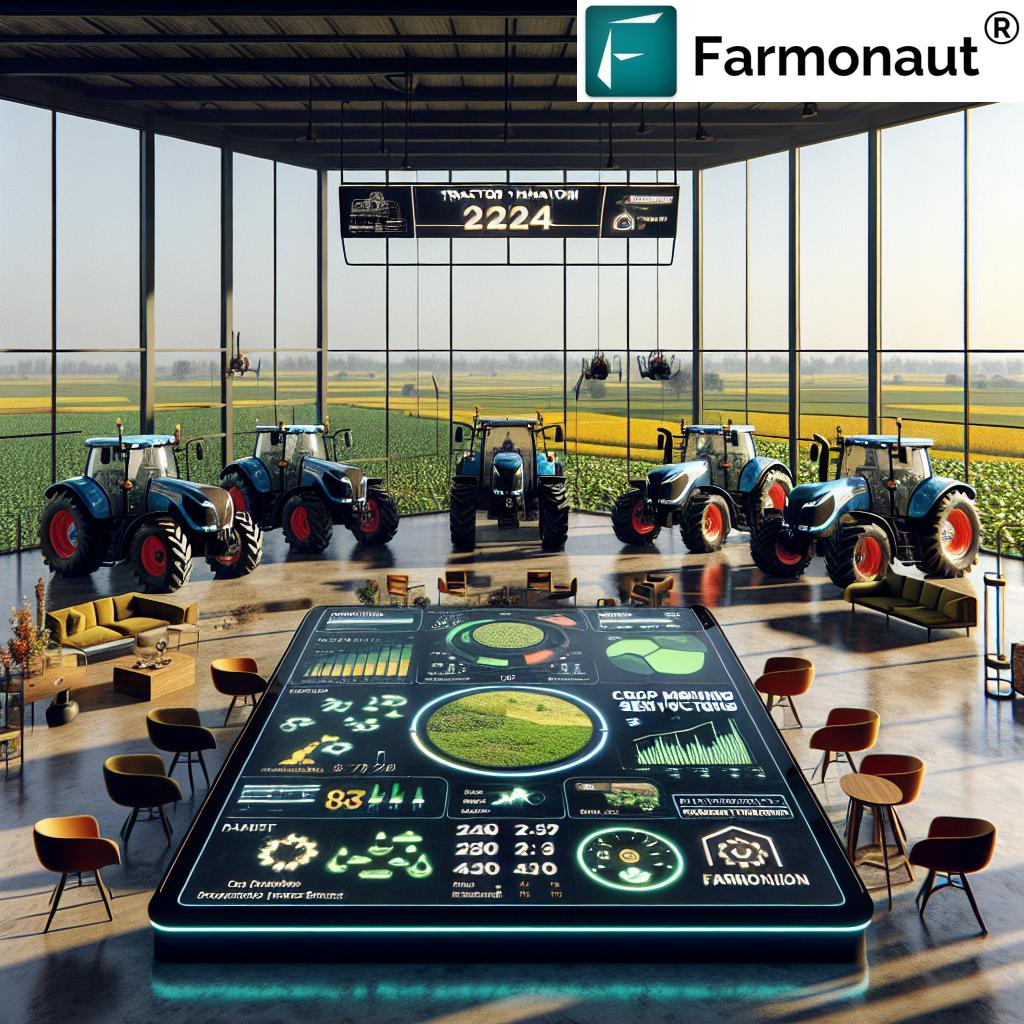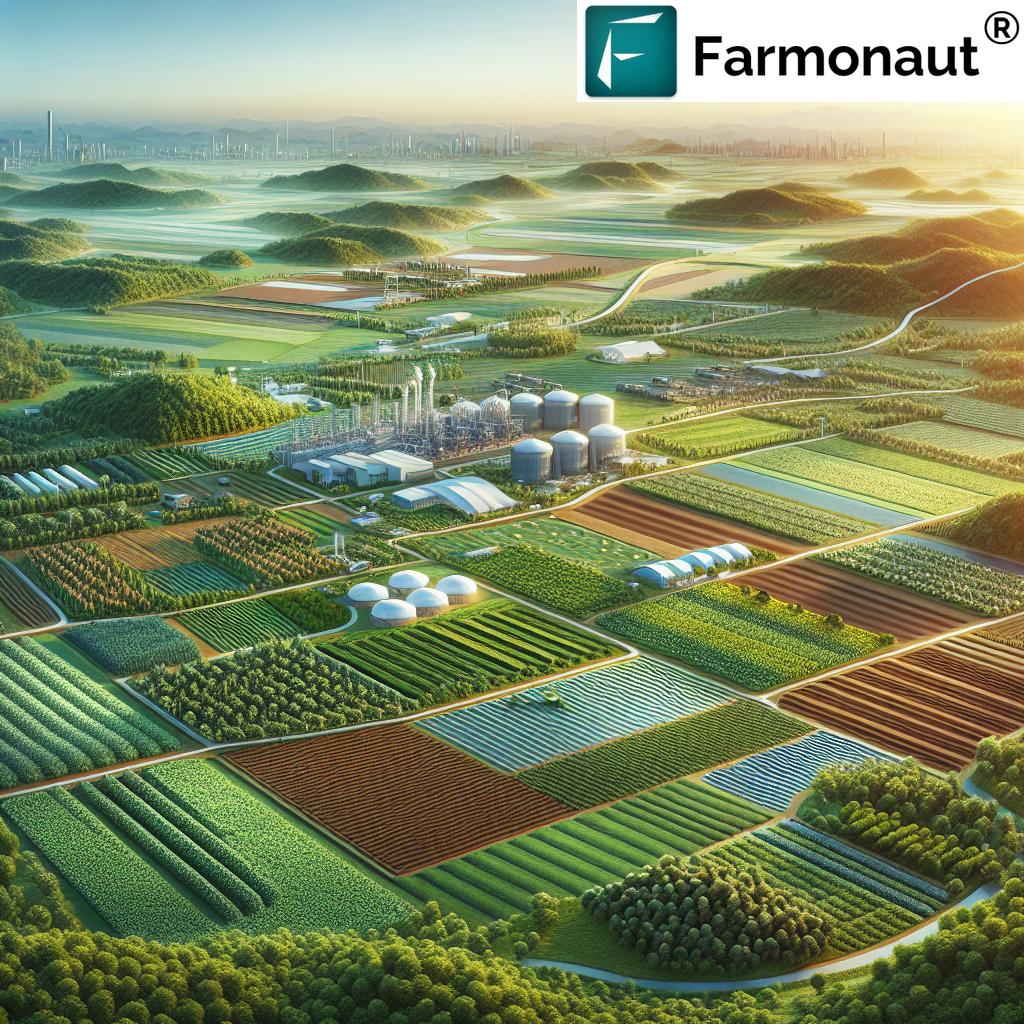Agriculture Middle East: 2025 Farming Innovations & Technology Breakthroughs
Introduction: The Critical State of Agriculture Middle East in 2025
Agriculture in the Middle East is more critical and complex in 2025 than ever before. The sector faces an ongoing struggle with water scarcity, climate challenges, and arid landscapes, yet it continues to evolve, embracing innovative farming technologies and best practices. The drive toward food security, sustainability, and economic resilience is fundamentally reshaping farming in the Middle East. In this comprehensive analysis, we explore the challenges of agriculture in Middle East, spotlight the transformative innovations taking root, and evaluate the policy directions, environmental responses, and digital technologies shaping the region’s agricultural future.
This journey into Middle East farming in 2025 will guide you through:
- The evolving agricultural landscape of the region
- The impact of climate change and environmental stress
- Adoption of advanced technologies and modern farming systems
- The crucial roles of policy, regional cooperation, and digital platforms like Farmonaut
The Agricultural Landscape of the Middle East
The Middle East—spanning from the arid Gulf states to the fertile valleys of the Levant and the Nile Delta—hosts a diverse range of countries with unique agricultural heritages. Despite this diversity, the entire region shares the looming specters of water scarcity and limited arable land.
Traditionally, the region has relied on ancient irrigation methods (like qanats and wells) to support staple crops such as wheat, barley, dates, fruits, and vegetables. Livestock farming—including sheep, goats, and camels—remains significant both economically and culturally. However, expanding urbanization, accelerating population growth, and environmental degradation have put enormous pressure on finite resources.

The agricultural sector remains vital to the region’s economic resilience, yet dependence on food imports is high—many countries import over 50% of their food, exposing them to external shocks. This vulnerability, starkly highlighted during the COVID-19 pandemic and subsequent geopolitical disruptions, has prompted a renewed focus on boosting local productivity and sustainable practices.
Water Scarcity & Sustainable Farming in the Middle East
Of all the challenges facing agriculture in Middle East, water scarcity remains the single greatest constraint. The region holds only about 1% of the world’s fresh water resources, yet supports nearly 5% of the global population. Increasing salinity in groundwater, over-extraction, and surface water depletion have severely compromised traditional irrigation systems.
Water-Efficient Farming Methods in 2025
To address these critical issues, Middle East farming is witnessing an unprecedented push toward water-smart agriculture, changing decades-old practices:
- Advanced drip irrigation and precision watering techniques help minimize wastage, ensuring water reaches plant roots directly.
- Desalination plants, especially in the Gulf states like UAE and Saudi Arabia, supplement limited freshwater supplies for agriculture.
- Recycled wastewater is increasingly used for irrigation, reducing overall demand on natural resources.
- Agroforestry initiatives—the strategic combination of tree planting with crop production—not only improve soil but also provide windbreaks and help combat desertification.

Comparison of Key Farming Innovations Addressing Middle East Agricultural Challenges (Estimated Data, 2025)
| Innovation Type | Primary Challenge Addressed | Estimated Adoption Rate (% of Farms) | Estimated Yield Improvement (%) | Estimated Water Use Reduction (%) | Projected Cost (USD/ha) |
|---|---|---|---|---|---|
| Advanced Drip Irrigation | Water Scarcity | 45% | 20% | 35% | $600–$900 |
| Hydroponics & Vertical Farming | Land Scarcity, Urbanization | 12% | 35% | 90% | $1,800–$4,000 |
| AI-powered Crop Monitoring | Resource Optimization | 30% | 15% | Varies | $120–$350 |
| Saline Water Usage | Groundwater Salinity | 7% | 10% | 25% | $250–$600 |
| Drought-Resistant Seeds | Climate Adaptation | 40% | 22% | 10% | $35–$100 |
This table provides an at-a-glance overview of technological solutions tackling water scarcity, climate challenges, and sustainability in farming in the Middle East as of 2025.
Climate Change Adaptation & Environmental Resilience in 2025
Climate change presents a formidable challenge, with rising temperatures, erratic rainfall, and more frequent droughts threatening agricultural output. Across the region, farming in the Middle East is increasingly focused on adaptation and resilience.
- Drought-resistant crop varieties are being bred and planted, designed to thrive with minimal water and tolerate extreme temperature swings.
- Agroecological practices such as crop rotation, companion planting, and conservation tillage help improve soil quality and support sustainable yields.
- Enhanced soil conservation (using mulching, organic fertilizers, and low-till farming) is essential for retaining moisture and nutrients.
- The adoption of carbon foot-printing solutions is enabling farms to monitor, report, and reduce agricultural carbon emissions. Carbon farming through agroforestry, cover cropping, and managed pasture is gathering speed.
Regional Focus: Key Countries Leading Agricultural Innovation
- Israel: A global leader in drip irrigation, AI-driven farming, and desalination for agriculture.
- United Arab Emirates (UAE): Pioneer of vertical farming, hydroponics in desert cities, and major investor in food security startups.
- Saudi Arabia: Home of large-scale controlled-environment agriculture, investing heavily in regenerative agriculture and solar-powered desalination.
- Egypt, Jordan, Iraq: Facing acute water scarcity, these Levant and Nile-rich countries are modernizing irrigated agriculture, experimenting with saline water use, and strengthening cross-border water management frameworks.
Technological Innovations Shaping Middle East Farming
2025 marks a pivotal year for farming in the Middle East as digital transformation and breakthrough technologies redefine how the region farms, manages risk, and secures its food supply.
- Digital agriculture has become mainstay, with satellite-based platforms, AI, and machine learning offering real-time monitoring, predictive analytics, and tailored advisories.
- Widespread adoption of drones for crop scouting, NDVI-based vegetation health mapping, and AI-driven pest management is revolutionizing farm management.
- Blockchain-based traceability systems (like those provided by Farmonaut Traceability) give regional producers the power to guarantee food authenticity, reduce fraud, and increase export-readiness.
- Controlled-environment agriculture—including vertical farming and hydroponics—is rapidly scaling, particularly in cities and arid Gulf states, enabling year-round production of vegetables and herbs with immense water savings.
- Fleet and resource management platforms (see Farmonaut Fleet Management) allow agribusinesses to track equipment, optimize logistics, and reduce operational costs through satellite and AI insights.
Access to real-time agricultural intelligence is growing more affordable and scalable thanks to satellite-based solutions, making advanced technologies accessible not only to large commercial farms but also to small and mid-sized producers across the region.
Mobile, Web & API Access: Empowering Every Grower
Access and empower your agricultural insights through Farmonaut’s robust web and mobile platforms:



For developers and businesses looking to automate access to real-time satellite data and integrate crop health analysis, Farmonaut API and API Developer Docs provide scalable, secure interfaces.
Fleet, Finance & Data: Supporting the Agribusiness Ecosystem
- Modern fleet management tools help optimize the deployment of tractors, harvesters, and irrigation systems, cutting costs across arable land in the Middle East.
- Satellite-based verification for crop loans and insurance is streamlining agricultural financing, reducing fraud risks, and supporting small farmers’ access to credit.
- Large-scale farm management dashboards provide centralized control for vast agricultural holdings, enabling more efficient and data-driven resource allocation.
Policy Reform & Regional Cooperation in Middle East Agriculture
Policy frameworks in the Middle East are adapting rapidly to support sustainable agriculture and self-sufficiency goals. Key trends include:
- Redirecting subsidies toward water-efficient technologies, sustainable crop rotation, composting, and organic farming methods.
- Expanding investment in agricultural research—especially projects addressing soil salinity, desertification, and saline water use.
- Enacting new land use and water management regulations to enforce groundwater protection and promote climate adaptation.
Regional cooperation on resource management is increasingly urgent due to shared transboundary rivers (Tigris-Euphrates, Jordan) and aquifers. Platforms like the Middle East Water and Agriculture Partnership and joint food security initiatives are facilitating knowledge exchange and peace-building through shared projects. Greater policy alignment paves the way for scalable innovations and effective responses to rapidly changing climate and security concerns.
How Satellite & Digital Solutions Empower 2025 Farming: The Farmonaut Perspective
As we look to the future of farming in the Middle East, satellite-driven insights are redefining how food is produced, risks are managed, and sustainability is tracked. At Farmonaut, our mission is to make advanced satellite-based solutions affordable and accessible for every user—from smallholders to large agribusinesses and regional policy makers.
Key Benefits of Farmonaut Platforms for Agriculture Middle East
- Satellite-Based Crop Monitoring: Our multispectral data delivers real-time analysis of fields, tracking vegetation health, irrigation effectiveness, and soil moisture. This empowers precision intervention and efficient resource management.
- AI & Blockchain Integration: Through the Jeevn AI Advisory System and blockchain-based traceability, we offer custom strategies and authentic supply chain records that boost farm productivity and consumer trust.
- Mobile & API Access: Whether you’re in the field or in the office, users leverage our easy-to-use web, mobile, or custom API interfaces, tailoring insight delivery to every operation size.
- Carbon Footprinting & Environmental Impact: We provide farm-specific tools for carbon management, monitoring emissions to ensure sustainability goals are met.
Our subscription-based model fits every scale, whether monitoring hectares of wheat in the Nile Delta, tracking water-efficient dates plantations in Saudi Arabia, or managing urban hydroponics in Dubai.
On-the-Go: The Farmonaut Crop Plantation Forest Advisory App
Explore Crop, Plantation & Forest Advisory tools from your phone: improve yields, minimize input waste, and make informed decisions in real-time.
Video Library: 2025 AgTech Breakthroughs
Explore more technology-powered solutions and deep dives on agriculture in Middle East by following each video in this evolving agtech library.
Summary Table: Innovations Mitigating Agriculture Challenges
| Innovation | Target Challenge | Expected Impact in 2025 |
|---|---|---|
| Drip Irrigation Systems | Water Scarcity | Up to 35% reduction in water usage, 20% yield increase |
| Saline Water Agriculture | Salinity Management | Enables farming on degraded soils, reduces pressure on freshwater |
| Hydroponics & Vertical Farming | Land Scarcity, Urbanization | 90% water saving, scalable urban food production |
| AI & Satellite Monitoring | Yield & Resource Optimization | 15-25% fewer input costs, real-time risk alerts |
| Drought-Resistant Varieties | Climate Change Adaptation | Increase harvest reliability, stabilize incomes |
| Blockchain Traceability | Market & Export Security | Improved food safety, reduced fraud/export rejections |
FAQ: Agriculture Middle East 2025
A: The single greatest challenge is water scarcity, followed by climate change, increasing soil salinity, limited arable land, population growth, and heavy dependence on food imports. Traditional irrigation is under strain, and urbanization is putting pressure on remaining farmland.
Q2: How are Middle East countries adapting farming for water scarcity?
A: Extensive adoption of advanced drip irrigation, water recycling, desalination, and precision agriculture technologies help reduce water usage in farming by up to 35%. Vertical farming and hydroponics further cut water demand while boosting local food production.
Q3: What role does technology play in modern Middle East farming?
A: Technologies like satellite-based crop monitoring, AI-driven analytics, and blockchain traceability are central. These solutions enable more informed decisions, better risk management, and transparent supply chains, supporting both large commercial farms and smallholders.
Q4: What is Farmonaut, and how does it support regional agriculture?
A: Farmonaut is a satellite technology company providing cost-effective, AI-enhanced monitoring and advisory services for agriculture via web, mobile, and API platforms. We empower farmers, businesses, and policymakers with real-time satellite data, crop health analytics, blockchain traceability, and resource management tools.
Q5: Are there policies supporting sustainable agriculture in the Middle East?
A: Yes. Governments are redirecting subsidies towards water-efficient systems, advancing research, enforcing new land and water regulations, and strengthening regional cooperation for managing shared water resources and climate adaptation programs.
Q6: How can I access Farmonaut’s services or integrate their API?
A: Farmonaut services are available via web, Android, and iOS apps. Our API and developer documentation enable seamless integration for automation and business intelligence in agriculture.
Conclusion: Shaping a Resilient Agricultural Future in the Middle East
The landscape of agriculture in the Middle East in 2025 is being reshaped by urgent environmental challenges, ambitious policy changes, and a wave of technological innovation. Water-smart practices, digital monitoring, and climate adaptation strategies are guiding the region toward greater food security and sustainability. The integration of satellite-powered platforms like Farmonaut is democratizing access to advanced agricultural data, empowering everyone from smallholders to government strategists to make smarter, more sustainable decisions.
As the Middle East evolves toward 2030 and beyond, the commitment to innovation, environmental stewardship, and regional cooperation will determine the success of its agricultural transformation—securing food, livelihoods, and resilience for generations to come.



